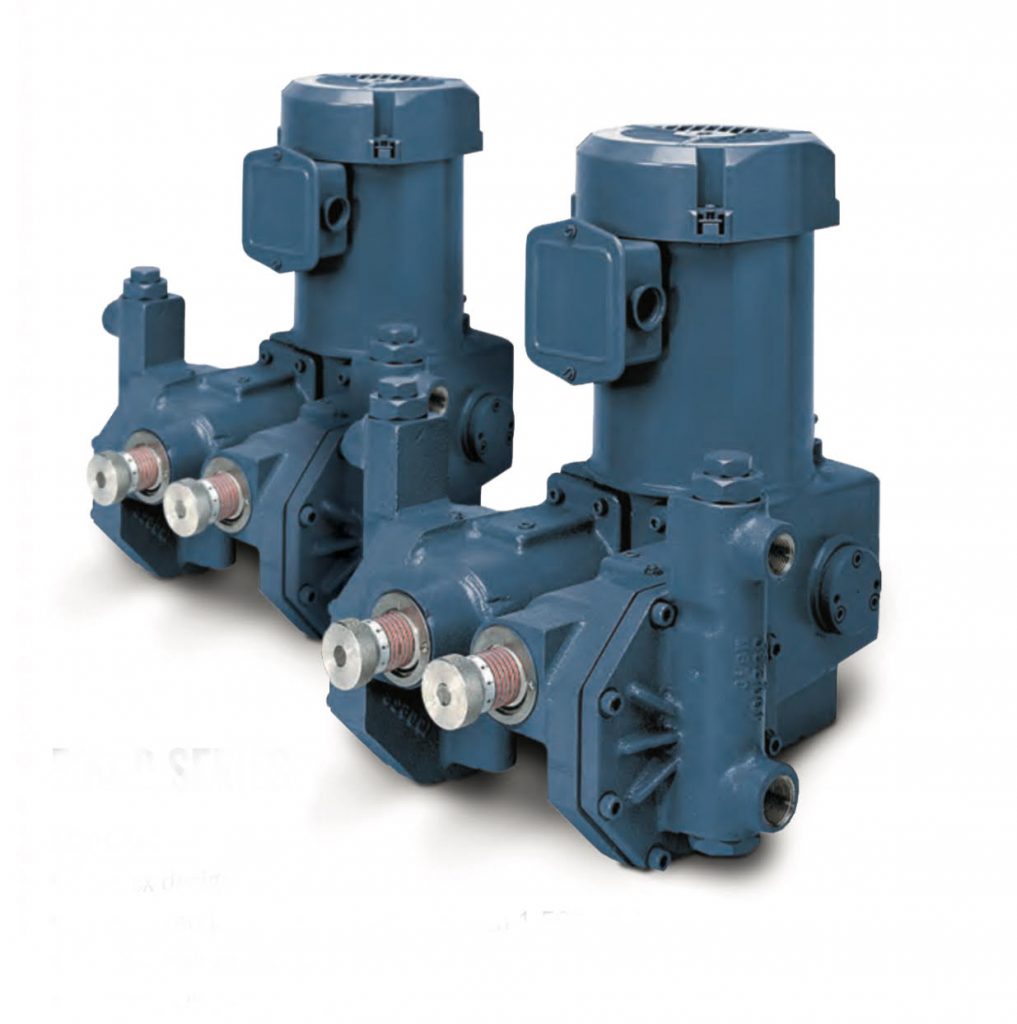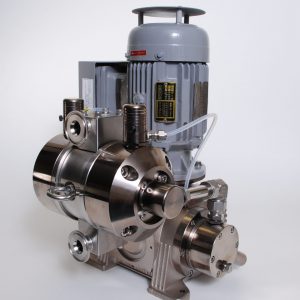Metering Pumps
Metering Pumps are used to introduce a specific amount of chemical to water-based solutions. They can be controlled by water quality instruments to change a process or meet environmental compliance. Applications include: boiler treatment chemicals, biocide addition, acid and caustic addition for pH adjust, alum and ferric chloride for nutrient and solids removal, sodium hypochlorite neutralization, sodium bisulfite dechlorination.

Sizing a Metering Pump
Capacity. The correct metering pump capacity is determined based on flow rate and discharge pressure. It should be sized so the maximum expected flow rate is 85% to 90% of the pump capacity. This allows a 10% to 15% operating cushion if needed. Do not oversize a metering pump. In order to maintain accuracy, minimum pump capacity should not be less than 10%.
Materials of Construction. Metering pumps are available in a variety of materials construction. Selection must take into consideration corrosion, erosion or solvent action. Acids and caustics may require stainless steel or alloy liquid ends. Abrasive slurries may erode wetted surfaces. Solvent-based chemicals may dissolve plastic pump heads. Is the chemical viscous or a slurry? Special liquid ends are available for these specific applications. Liquid ends are also available which automatically vent accumulating gases.

Environment. Will the pump be indoors or outdoors? The motor should be sheltered from direct sunlight. Freeze protection and heat tracing may be required. Corrosive environments may require special coatings. Identify hazardous area requirements. Dust in the air can ignite as can fumes or vapors. Available utilities may include electric, air, gas or solar means of driving the pump.
Control. Chemical metering pump control is based on two requirements: How much? How often? Stroke speed changes the frequency of chemical addition. Adjusting stroke length changes how much chemical is added. Control may be a manual continuous operation, manual on/off operation or proportional to a process control signal.
- How Much? Manual control changes pump stroke length by adjusting a micrometer dial. This allows the pump to be operated between 10% and 100% of capacity. Flow rate can be controlled automatically (in response to a process signal) by electric or pneumatic positioners which change the pump stroke length. Using a positioner gives 10:1 turn-down, the full adjustable range. When a metering pump is controlled by a stroke positioner, the number of chemical doses remains constant and uniformly distributed in a constantly flowing line.
- How Often? Using a variable speed drive (VFD) changes the stroke speed. Using a variable speed drive will give as much turn-down as the ratio of the pump stroking speed divided by the minimum operating speed of the pump. As a VFD changes the stroke speed, the size of a dose injected on each stroke remains the same. Note that if the doses are less frequent, undesirable process results can occur. It is recommended that constant dose intervals be maintained.
A combination of stroke length positioning with a VFD may allow additional adjustability or turn-down flexibility.
Selection. Hydraulic diaphragm pumps are designed for high-pressure applications. Many options are available for viscous or abrasive chemicals and slurries.

Process Pumps
Process Pumps are used for moving fluids within an industrial or municipal process. Electronic diaphragm pumps, pulsed by solenoids, can operate at less than a single stroke per minute. The characteristics and timing of each stroke, from start to finish, are the same at all stroking speeds. Moving parts provide long, reliable service. While highest stroking speeds should be avoided with viscous or abrasive chemicals, solenoid pumps are excellent in low-pressure applications.


Applications include: coating addition, food additives, polymers and slurries.

